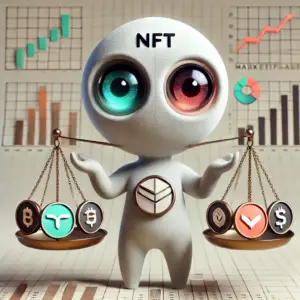The advent of non-fungible tokens (NFTs) has revolutionized the digital realm, introducing a new paradigm for ownership and authenticity in the realm of virtual assets. However, amidst the surge in popularity and the promise of transformative potential, environmental concerns have emerged, casting a shadow over the sustainability of this cutting-edge technology.
Delving into the Energy Consumption Enigma
The crux of the environmental debate surrounding NFTs lies in the energy-intensive process of creating and transacting these tokens on blockchain networks. Blockchain technology, the underlying foundation of NFTs, relies on a consensus mechanism called proof-of-work (PoW), which involves a computational competition among network participants to validate transactions. This process, while ensuring the security and integrity of the blockchain, consumes significant amounts of energy, primarily in the form of electricity.
The energy consumption of PoW blockchains varies significantly depending on the specific algorithm and network size. For instance, the Ethereum blockchain, currently the leading platform for NFTs, is estimated to consume as much energy as the entire country of Argentina. This energy demand is primarily driven by the high computational power required to mine new blocks on the blockchain.
Quantifying the Environmental Footprint
The environmental impact of NFTs is often expressed in terms of their carbon footprint, which represents the total amount of carbon dioxide emitted into the atmosphere as a result of their production and use. Studies have estimated that the average carbon footprint of an NFT can range from 30 to 100 kilograms of carbon dioxide, depending on the specific blockchain and the complexity of the artwork or asset being minted.
To put these numbers into context, one NFT transaction can generate the same amount of carbon emissions as driving a car for 20 miles. When considering the sheer volume of NFTs being minted and traded, the cumulative impact can be substantial.
Factors Influencing NFT Energy Consumption
Several factors contribute to the energy consumption of NFTs, including:
- Blockchain Type: The consensus mechanism used by the blockchain significantly impacts its energy efficiency. PoW blockchains, such as Ethereum, are known for their high energy consumption, while newer consensus mechanisms like proof-of-stake (PoS) are designed to be more energy-efficient.
- Artwork Complexity: As with other forms of digital content, the complexity of the artwork or asset being minted can influence its energy consumption. More intricate and high-resolution graphics require more processing power, leading to higher energy use.
- Secondary Transactions: The energy consumption of NFTs extends beyond the initial minting process. Each secondary sale or transfer of an NFT also requires computational power on the blockchain, contributing to its overall energy footprint.
Addressing Environmental Concerns: Exploring Sustainable Alternatives
As the environmental impact of NFTs has gained attention, the community has begun exploring sustainable alternatives to mitigate their carbon footprint. Several promising approaches are emerging:
- Transitioning to Proof-of-Stake: PoS blockchains, such as Cardano and Solana, are gaining popularity due to their significantly lower energy consumption compared to PoW blockchains. This shift can significantly reduce the overall carbon footprint of NFTs.
- Utilizing Renewable Energy Sources: Implementing renewable energy sources such as solar, wind, and geothermal power can significantly reduce the carbon intensity of NFT production and transactions. By sourcing electricity from clean sources, the environmental impact can be minimized.
- Optimizing Blockchain Efficiency: Ongoing research and development efforts are focused on improving the efficiency of blockchain protocols. By optimizing consensus algorithms and reducing computational waste, the energy consumption of blockchain-based systems can be further reduced.
- Promoting Responsible Minting Practices: Encouraging creators and collectors to consider the environmental impact of their NFT activities can incentivize the adoption of eco-friendly practices. This includes prioritizing PoS blockchains, using efficient minting tools, and minimizing the creation of unnecessary NFTs.
Conclusion: A Sustainable Future for NFTs
The environmental impact of NFTs is a complex issue with no easy solutions. However, the growing awareness of these concerns has led to a surge in innovation and collaboration within the NFT community. By embracing sustainable alternatives, optimizing blockchain technology, and promoting responsible practices, the NFT ecosystem can evolve into a more environmentally conscious and sustainable paradigm. As the technology continues to mature, the future of NFTs may hold the promise of a more equitable and sustainable digital landscape.






